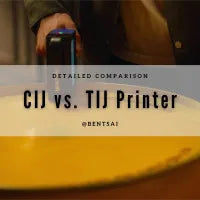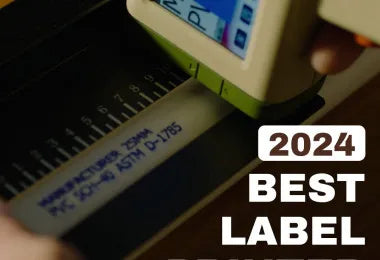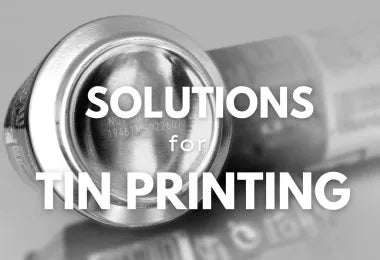CIJ (Continuous Inkjet) and TIJ (Thermal Inkjet) printers are two different types of inkjet printing technologies used for industrial and commercial printing purposes, especially for small character prints labeling and marking. These two types of machines have been widely applied in many industries such as food and beverage, lumber, manufacturing, logistics, etc. Even though they’re getting more popularity, there are still many people who’re new with these machines and today, we will share a breakdown of their differences.
|
Compare Features |
CIJ Printer |
TIJ Printer |
|
Print Quality and Resolution |
Typically prints at a lower resolution, creating a dot pattern that's sufficient for many industrial applications but not as detailed as TIJ output. |
Offers high-resolution printing up to 600 x 600 dpi, similar to desktop printers, making it suitable for detailed graphics and clear text. |
|
Print Speed |
Both TIJ and CIJ technologies are capable of high-speed printing, suitable for fast application requirements. |
|
|
Print Distance |
Allows for greater throw distances, which can be beneficial when printing on items that are moving or vibrating. |
Requires close proximity to the substrate, with printheads positioned within a few millimeters of the surface for optimal printing quality. |
|
Ink Drying Time |
Both TIJ and CIJ have fast-drying inks, which is essential for quick handling and processing after printing. |
|
|
Surface Applications |
● Porous: Capable but may not utilize its full potential as solvent-based inks are not necessary. ● Non-porous: Superior for oily or challenging surfaces with robust adhesion and durability. |
● Porous: Excellent for high-quality prints on paper, cardboard, wood, and fabric. ● Non-porous: Adequate for clean surfaces but less effective on oily or dirty materials. |
|
Recovery from Downtime and System Modularity |
Downtime can be significant, often requiring professional service. The systems are not as modular, and repairs can be costly. |
Experiences less downtime due to fewer moving parts, and the systems are modular, allowing for easy component replacement. |
|
Service Contracts |
Often necessitate service contracts to address the expected downtime and system complexity. |
Rarely require service contracts due to the ease of replacing cartridges and fewer moving parts. |
|
Maintenance and Cleanup |
More prone to mess with the potential for ink to coat the floor beneath the printer, requiring harsh solvents and proper ventilation for cleanup. |
Generally low-maintenance, creating little mess. Minor cleanups can be performed with a mild, alcohol-based solution. |
In summary, TIJ printers are more suitable for high-quality, detailed printing on porous surfaces and are easier to maintain with a cleaner operation and modular system design. They are more user-friendly and have lower running costs and downtime. In contrast, CIJ printers excel in industrial settings, offering the ability to print on a wider range of surfaces, including non-porous and oily materials. They have a higher maintenance requirement and operational cost but are preferred for their robustness in continuous, high-volume printing scenarios.
The choice between TIJ and CIJ should be made based on the specific needs of the printing task, including the type of surface to be printed on, the level of detail required, the operational environment, and the maintenance capabilities of the user.
Here at Bentsai, we provide the top-quality handheld TIJ printers in the industry and have helped many business owners across the world to solve their marking and labeling needs with our rich experience, innovative technologies, and dedicated sales and customer support team. If you’re looking for a portable TIJ inkjet printer that truly gets the job done, Bentsai is your go-to-place!





